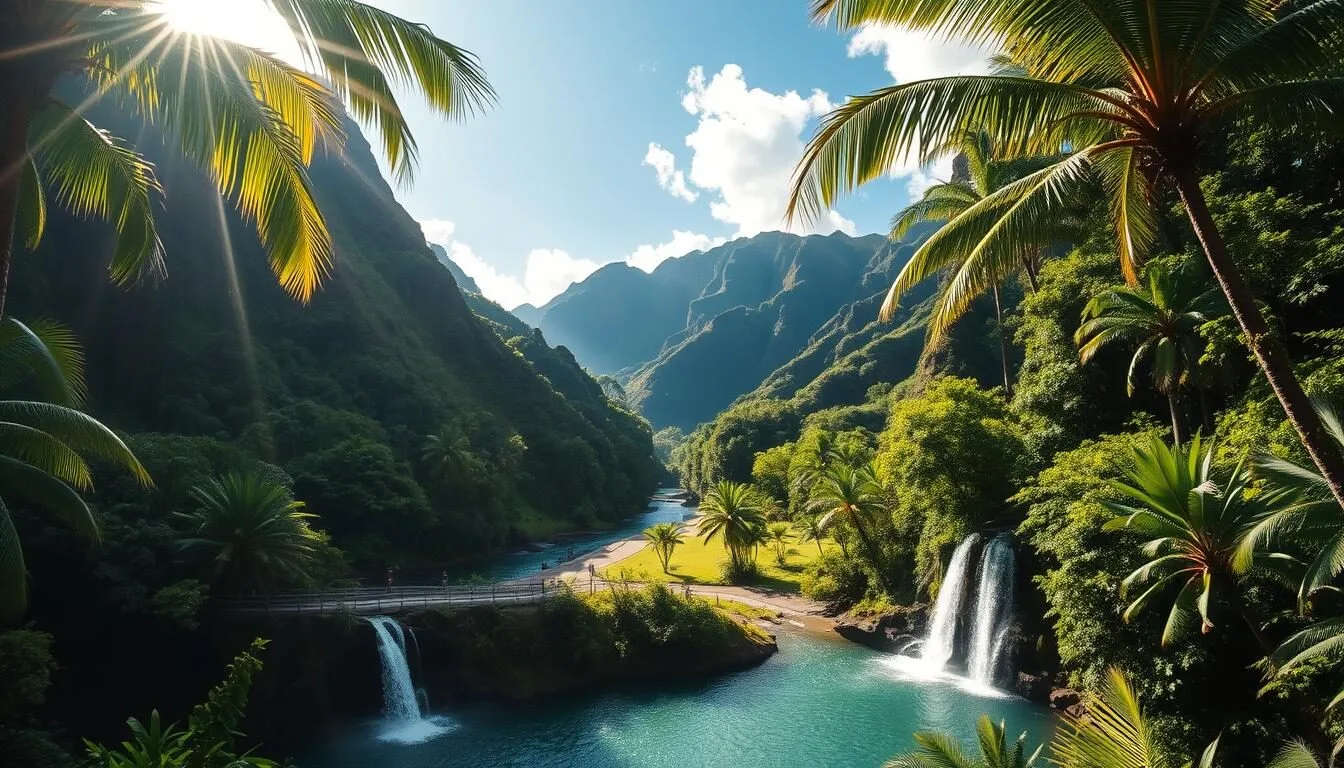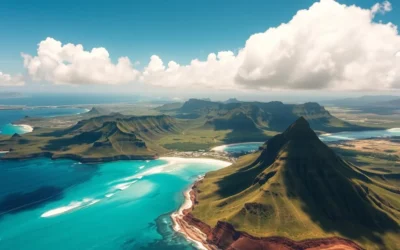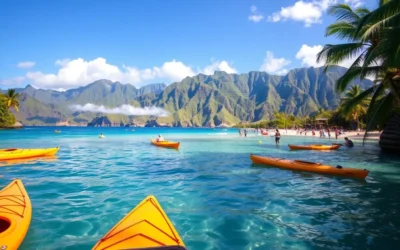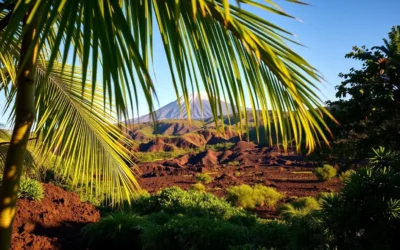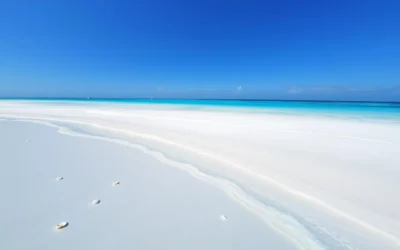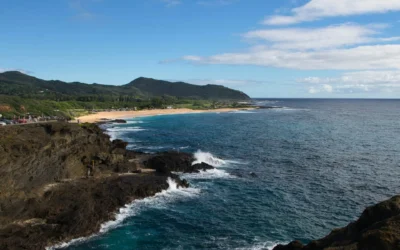✓ Accommodations✓ Flights✓ Rental Cars✓ Tours & Activities
Imagine walking through a lush, 1,875-acre valley that’s been a sacred site for Hawaiians for over 700 years. You’re about to experience the natural beauty and rich culture of Waimea Valley on Oahu’s North Shore.
This special place is known for its healing powers, where ancient Hawaiians believed the reddish fresh water had the power to heal. The unique environment, with its iron oxide-rich volcanic soil, creates a serene atmosphere, perfect for reflection and rejuvenation. As you visit Waimea Valley, you’ll explore botanical gardens, ancient archaeological sites, and the stunning Waimea Falls.
Managed by Hi’ipaka LLC, a non-profit organization dedicated to preserving this cultural site, your visit supports ongoing conservation efforts. Get ready to immerse yourself in the history and culture of this incredible valley.
The Sacred History of Waimea Valley
For centuries, Waimea Valley has been a place of profound spiritual significance, its history woven into the very essence of Hawaiian culture. You can explore the valley’s rich past, from its ancient Hawaiian significance to its modern stewardship.
Ancient Hawaiian Significance
Waimea Valley was awarded to Hewahewa Nui, the spiritual advisor of Kamehameha the Great, after he conquered O’ahu in 1795. This marked the beginning of a new era for the valley, as it became closely tied to the spiritual and cultural practices of Hawaii. The valley’s spiritual importance continued through the early 19th century, a time of significant change in Hawaii.
From High Priests to Modern Stewardship
As Hawaii underwent profound changes, including the fall of the traditional kapu system and the rise of Western influences, Waimea Valley’s ownership and purpose evolved. The Mahele Land Redistribution Act of 1848 led to multiple changes in ownership, eventually resulting in the valley being managed by Hi’ipaka LLC in 2008, with a focus on cultural preservation and education, fulfilling a new kind of duty to the land and its heritage.
| Year | Event | Significance |
|---|---|---|
| 1795 | Kamehameha the Great conquers O’ahu | Awards Waimea Valley to Hewahewa Nui |
| 1848 | Mahele Land Redistribution Act | Changes in land ownership |
| 2008 | Hi’ipaka LLC formed | Management for cultural preservation |

Understanding the Ahupua’a System
You can gain a deeper appreciation for Waimea Valley’s rich history by understanding the Ahupua’a system, a traditional Hawaiian land division concept that played a crucial role in the sustainable management of the valley’s resources.
Land Division and Resource Management
The Ahupua’a system divided the land into three main zones: uka (uplands), kula (midlands), and kai (coastal areas). The uka region provided timber for constructing wa’a (canoes) and hale (houses), medicinal plants, and birds for making hulu (feather) adornments.
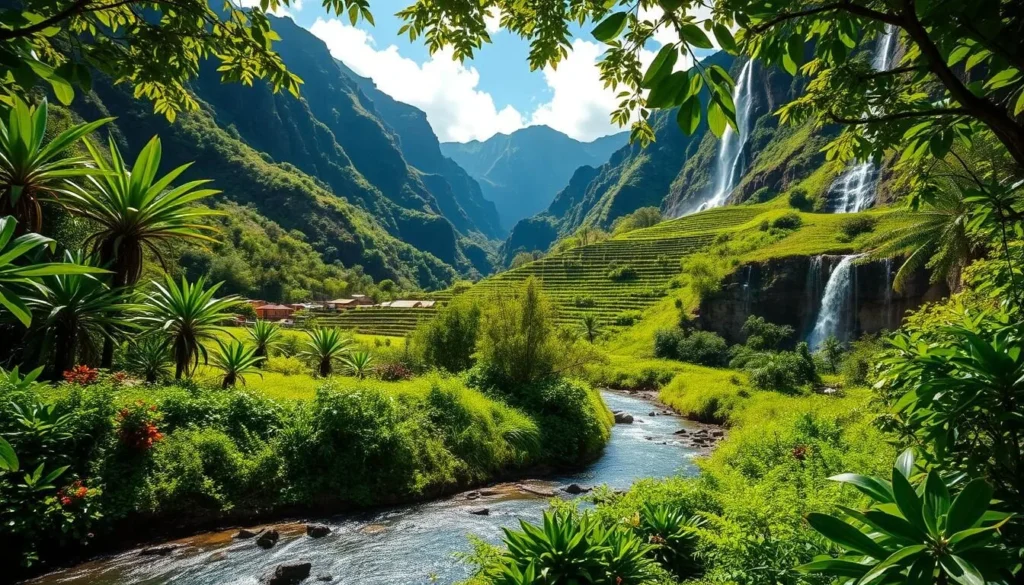
Resources and Management in Ancient Hawaii
In the kula region, agricultural crops such as mai’a (banana), kalo (taro), and ‘ulu (breadfruit) were farmed. The kai region offered resources from the ocean, including i’a (fish), he’e (octopus), and limu (seaweed). Sophisticated water management techniques, including irrigation systems, were used to distribute water from mountain streams to agricultural terraces, showcasing the ingenuity of ancient Hawaiians in managing their environment sustainably.
By understanding this traditional management system, you can appreciate how Waimea Valley’s current conservation efforts are rooted in ancient Hawaiian wisdom about living sustainably with the land.
Natural Beauty and Botanical Gardens
As you explore Waimea Valley, you’ll discover a rich tapestry of plant life and breathtaking landscapes. The valley is home to a stunning botanical garden that showcases a diverse array of flora from around the world, as well as native Hawaiian plants.
Diverse Plant Collections
The botanical garden in Waimea Valley features an impressive collection of plants, with over 5,000 species represented. You’ll have the opportunity to see a wide range of flora, from tropical flowers to towering trees, all set amidst the valley’s picturesque landscapes. 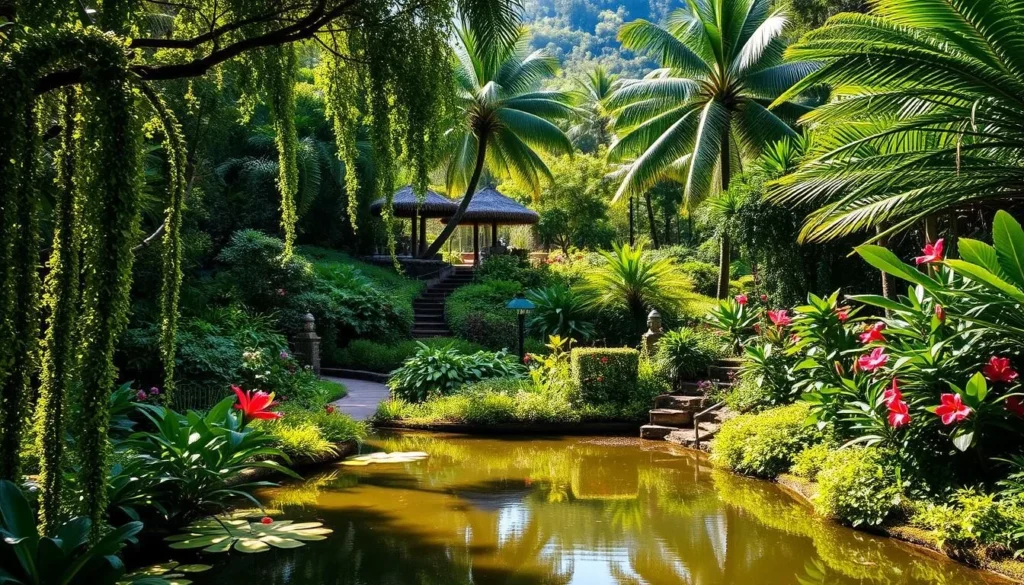
Native Hawaiian Flora and Conservation Efforts
Waimea Valley is dedicated to preserving native Hawaiian flora, many of which are rare or endangered. The valley’s conservation efforts include propagation programs, botanical surveys, and habitat restoration. By combining modern scientific approaches with traditional Hawaiian land management practices, the valley serves as a model for sustainable stewardship. You can learn about these efforts through educational signage throughout the gardens, enhancing your understanding of the unique adaptations and cultural significance of native Hawaiian plants.
Waimea Falls: The Valley’s Crown Jewel

Waimea Falls, a 45-foot waterfall, is the crown jewel of Waimea Valley. This stunning natural attraction is a highlight of any visit to the valley.
Hiking to the Waterfall
The journey to Waimea Falls involves a leisurely hike through the valley’s lush landscape. You’ll pass through diverse plant collections and may even catch a glimpse of the valley’s native birds. Be sure to wear comfy shoes for the trail.
Swimming Experience and Safety Guidelines
Once you arrive at the falls, you can enjoy swimming in the cool, refreshing pool. Life jackets are provided and required for all swimmers. Swimming at Waimea Falls is a unique experience that connects you to the natural beauty and spiritual significance of the area. The water is refreshingly cool year-round, and water shoes are recommended due to the rocky and slippery bottom.
- You can swim in the refreshing pool beneath Waimea Falls, immersing yourself in the valley’s natural beauty.
- Lifeguards are on duty during swimming hours to ensure your safety.
- Changing rooms and restrooms are available near the falls for your convenience.
- The water temperature is cool year-round, making it a refreshing experience.
- Swimming at the falls offers a spiritual dimension, connecting you to the ancient Hawaiians who considered these waters sacred.
Cultural Sites and Experiences
Waimea Valley is not just a beautiful destination; it’s also a place where you can experience the living culture of Hawaii. As you explore the valley, you’ll encounter various cultural sites and experiences that showcase the rich heritage of the Hawaiian people.
Ancient Hawaiian Structures
The valley is home to several ancient Hawaiian structures that provide a glimpse into the lives of the people who once lived there. These structures are a testament to the ingenuity and craftsmanship of the ancient Hawaiians.
Cultural Demonstrations and Performances
You can experience authentic Hawaiian cultural demonstrations throughout Waimea Valley, including traditional crafts, music, and dance. Regular hula performances, known as Ka’aha Hula I Waimea, take place on Saturdays at 11 AM and 1 PM in the Amphitheatre or Upper Meadow. These hula shows showcase this sacred Hawaiian dance form, offering insights into Hawaiian traditions and values. 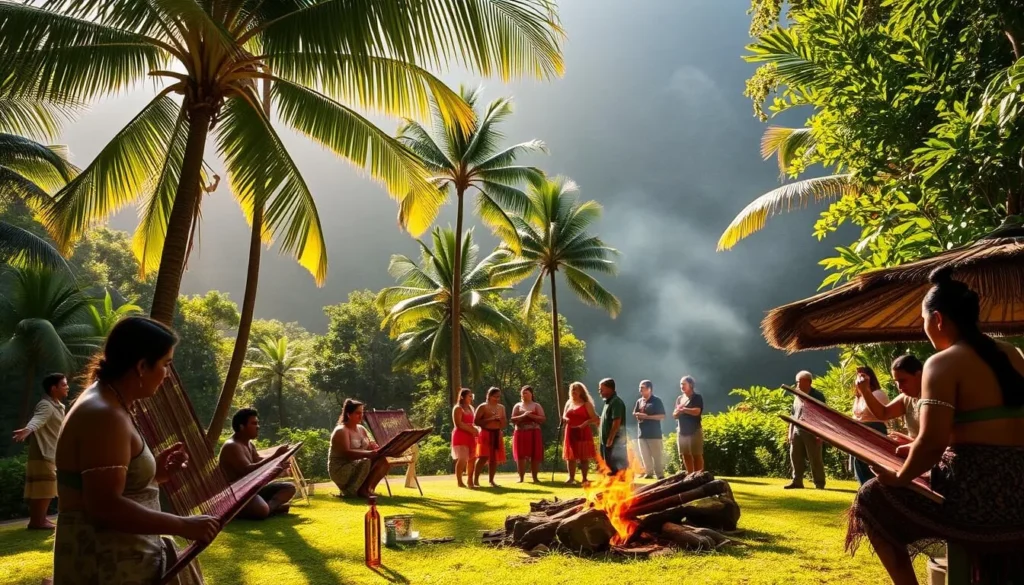
By visiting Waimea Valley, you’re not just seeing things; you’re experiencing the living history and culture of Hawaii.
Waimea Valley, Oahu, Hawaii: Visitor Information
Planning a visit to Waimea Valley requires some essential information to make the most of your trip. Understanding the basics will help you navigate and enjoy this beautiful destination.
Hours of Operation and Admission Fees
Before you go, it’s good to know that Waimea Valley is open daily. Shuttle transportation is available from the ticket booth to Waimea Falls starting at 10:00 AM until 3:00 PM, costing $10 one-way per person. It’s also worth noting that there are no parking fees, making it a convenient visit.
| Service | Cost | Operating Hours |
|---|---|---|
| Shuttle Transportation | $10 one-way | 10:00 AM – 3:00 PM |
| Mobility Scooter Rentals | $19.99 per hour | Available during valley hours |
| Parking | Free | Available during valley hours |
Facilities and Amenities
The valley offers various amenities to enhance your visit. You’ll appreciate the well-maintained facilities, including clean restrooms near the entrance and along the trail. Other amenities include the Hale Kope Coffee House, a gift shop, and casual dining options serving Hawaiian-inspired meals.

- Clean restrooms are available near the entrance and along the trail.
- Mobility scooter rentals are available for $19.99 per hour.
- The Hale Kope Coffee House opens at 8 AM.
Special Programs and Tours
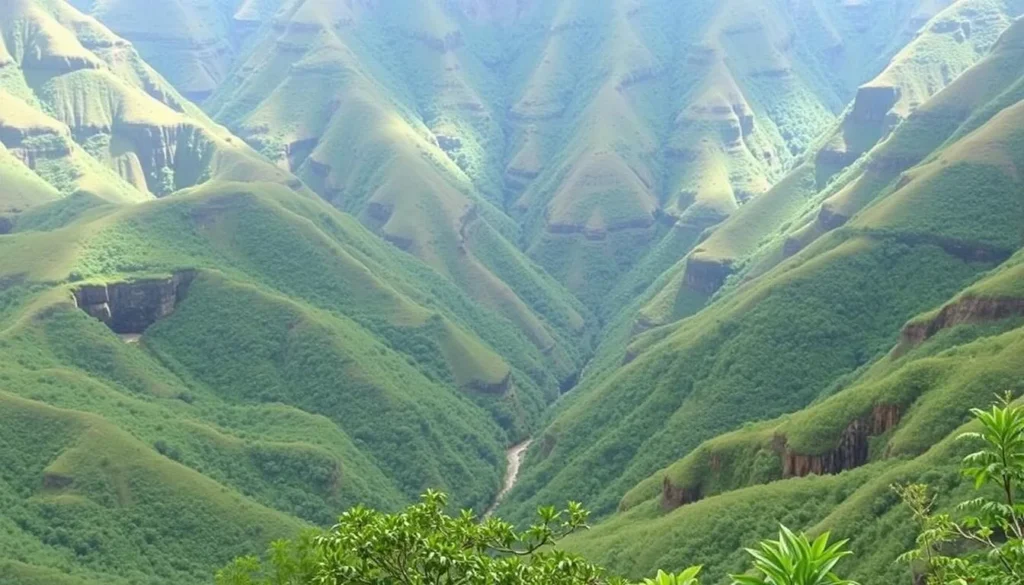
Discover the richness of Waimea Valley with its array of special programs and tours, blending natural wonders with cultural experiences. Whether you’re interested in botany, Hawaiian culture, or simply exploring a unique environment, Waimea Valley has something to offer.
Guided Valley Tours
Join the valley’s botanical staff for the “What’s Blooming” botanical tour at 12:30 PM, Tuesday through Sunday. This guided walk is included with admission and allows you to explore the garden’s extensive plant collection, highlighting rare and seasonal blooming plants from Hawaiʻi and beyond.
Botanical and Cultural Programs
Waimea Valley offers a range of cultural workshops and educational programs. You can participate in lei-making, lauhala weaving, and learn about native plant uses. Educational programs for children and families provide hands-on learning experiences about Hawaiian ecology, culture, and sustainability principles. The valley also hosts seasonal celebrations, including makahiki events and solstice observations, deepening your appreciation of Hawaiian culture and the natural environment.
Toa Luau Experience
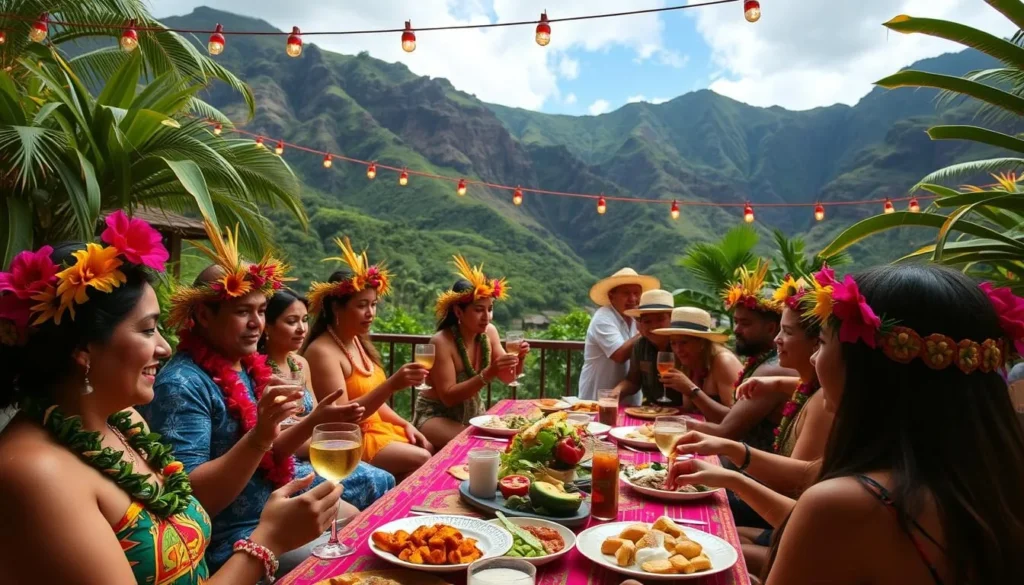
Immerse yourself in Hawaiian culture with the Toa Luau experience at Waimea Valley. This event offers a unique opportunity to enjoy traditional Hawaiian cuisine, watch captivating performances, and participate in cultural activities.
Traditional Hawaiian Feast and Entertainment
The Toa Luau is a celebration of Hawaiian heritage, featuring a delicious feast, traditional dances, and live music. You can expect an evening filled with aloha spirit, as you enjoy local specialties and witness the rich cultural traditions of Hawaii.
Booking Information and What to Expect
To ensure your spot at the Toa Luau, it’s crucial to book in advance, especially during peak tourist seasons. The event offers various package options, including standard admission and premium seating. Your ticket includes admission to Waimea Valley for the day, allowing you to explore the botanical gardens and waterfall before the evening festivities.
- Book your Toa Luau experience well in advance through their website.
- The luau offers different package options, including standard admission and premium seating.
- Your luau ticket includes admission to Waimea Valley for the day.
- The event starts in the late afternoon with cultural activities and demonstrations.
- Comfortable, casual attire is recommended for the luau.
When attending the Toa Luau at Waimea Valley on the North Shore, plan your time accordingly to make the most of your visit. You should allocate time to explore the beautiful surroundings before the event begins.
Planning Your Visit to Waimea Valley
Your Waimea Valley experience can be significantly improved by planning your visit at the right time. Whether you’re looking to avoid crowds or enjoy specific botanical displays, a little planning can go a long way.
Best Time to Visit
The best time to visit Waimea Valley is during the spring and fall when the weather is mild and crowds are smaller. Summer is ideal for families, while winter brings a serene landscape, though it might be wetter.
What to Bring
When visiting Waimea Valley, be sure to bring comfortable walking shoes, sunscreen, and a hat. Staying hydrated is crucial, so bring a refillable water bottle. Don’t forget your camera to capture the stunning scenery and botanical wonders.
Accessibility Information
Waimea Valley is committed to accessibility. The main trail to the waterfall is paved, making it suitable for wheelchairs and strollers. A shuttle service is available for $20 round-trip, and transportation assistance is available upon request. Mobility scooters can be rented for $19.99 per hour.
| Accessibility Feature | Description |
|---|---|
| Paved Trail | Main trail to the waterfall is paved for easy navigation |
| Shuttle Service | $20 round-trip for those who need transportation assistance |
| Mobility Scooters | Available for rent at $19.99 per hour |
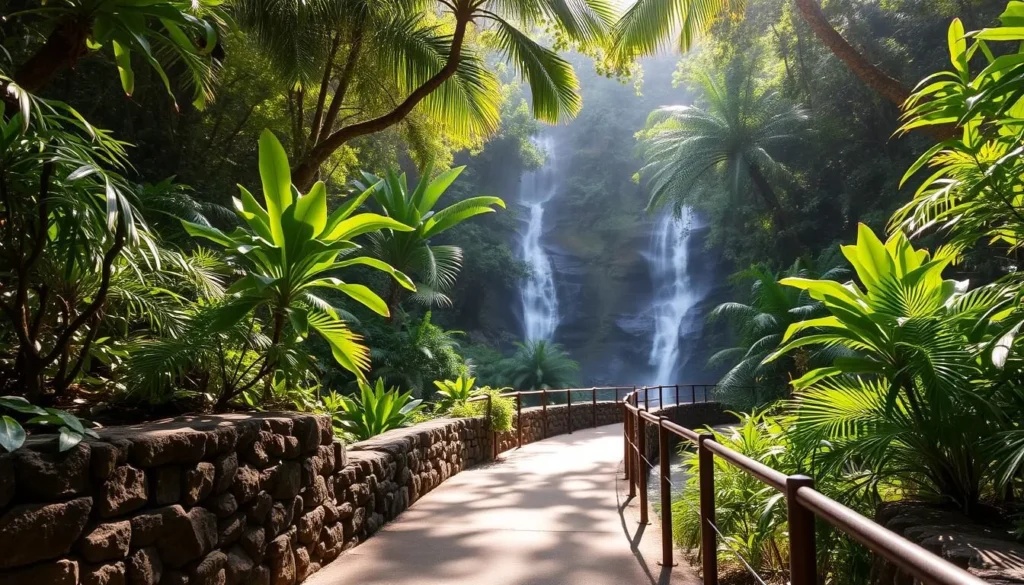
Conclusion: Preserving Paradise for Future Generations
As you conclude your visit to Waimea Valley, it’s clear that this sacred site is more than just a tourist destination. Your visit contributes directly to the preservation of this special place, supporting ongoing conservation and cultural programs.
The valley stands as a living example of how cultural preservation and environmental conservation can work together, creating a model for sustainable tourism. By respecting the valley’s cultural sites and following the guidance of staff, you help ensure that Waimea Valley will continue to inspire and educate visitors for generations to come.
Whether you came to hike to the waterfalls, learn about Hawaiian culture, or enjoy a day with family in a beautiful setting, Waimea Valley offers a meaningful alternative to more commercialized attractions on Oahu, making it a unique spot to visit Waimea.
The above is subject to change.
Check back often to TRAVEL.COM for the latest travel tips and deals.
